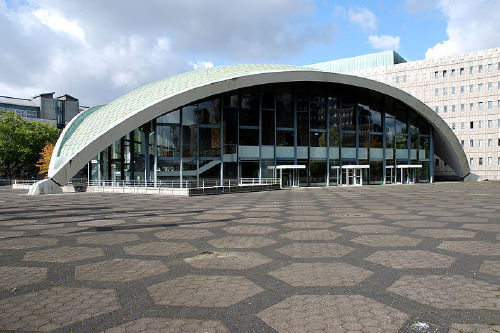
sofia
While there are many modern arts and performance buildings in existence, here we look at the those that go beyond contemporary and pave the way for modern building design. While the buildings on the list are already standing, a few to keep an eye on are Hamburg’s Elbe Philharmonic Hall, an opera house on Seoul’s Han River and the Dubai Opera House - All of which are set to be finished within the coming years.
Palau de les Arts Reina Sofia - Valencia, Spain

Opening in 2005, Reina Sofia Palace of the Arts was built as part of a wider project called, The City of Arts and Sciences. The entertainment complex contains a number entertainment outlets, including a cinema, an aquarium, a museum and of course the opera house. Designed by Valencian Santiago Calatrava, the opera house is the tallest in the world at just under 250 ft. The Reina Sofia Palace has a had a short, but difficult history, suffering several floods and broken stages.
Hangzhou Grand Theatre, Hangzhou, China

Flickr, Toby Simkin
Hangzhou is located southwest of Shanghai and boasts a theatre with a capacity of 1,000 more seats than its Guangzhou rival. Designed by Canadian architect, Carlos Ott, the building is already considered a landmark within the province. Ott also designed the Bastille Opera House in Paris - however, it did not make our list because, although it is certainly modern, it just isn’t extravagant enough.
Kazakhstan Central Concert Hall, Astana, Kazakhstan

If you instinctively think of Borat when you here Kazakhstan, then think again. The country’s capital city, Astana is rapidly developing as the national financial situation improves. Just over three years old, the building has been providing Kazakhs with a variety of ballets, orchestras and pop concerts.
While Astana has a specific opera house in the form of the Pyramid of Peace building, the Central Concert Hall has a sleeker, more futuristic design and is more representable of what to expect of future architecture.
Esplanade – Theatres on the Bay, Singapore

Within the ultra modern cityscape of Singapore sits Esplanade - Theatres on the Bay. Resting on the marina of the Singapore River, the building is one of the busiest arts and performance areas in the world. There are a selection of stage areas in the building, catering to a number of different performance styles, with an overall seating capacity just short of 4,000.
National Centre for the Performing Arts, Beijing, China

China’s primary performance building is often referred to, somewhat expectedly, as The Egg. The design was thought up by Frenchman, Paul Andreu, who is more often known in the architecture for designing airports, and was completed in 2007. It contains nearly five and a half thousand seats and cost around £27 million. The centre is located near to Beijing’s most famous landmarks, including the Forbidden City, Tiananmen Square and The Great Hall of The People, creating a juxtaposition of an ancient and modern snapshot.
Auditorio de Tenerife, Tenerife, Spain

Those with an eye for design will probably be able to guess that this building is again the work of Santiago Calatrava who was behind the opera house in Valencia. With a similar style and colour palate to the Palau de les Arts Reina Sofia, Auditorio de Tenerife was designed and built just before its bigger brother and is on a slightly smaller scale. The building is often celebrated as the Canary Islands' most modern building and has become something of a poster child for the Spanish holiday resorts.
Guangzhou Opera House, Guangzhou, China

Flickr, Peejing
Built by the world famous Zaha Hadid, the Guangzhou Opera house is buried low in the cityscape and is somewhat difficult to visually comprehend in photographs. The structure resembles two pebbles because of the building’s position next to the pearl River Delta. The opera house's main concert hall has one the most futuristic interiors on the list, with layered and warped walls and ceilings. The project took around seven years for completion and the building was opened in 2010. It fits an audience of just under one and a half thousand.
Opernhaus Dortmund, Dortmund, Germany

M Bigge
Although the Opernhaus isn’t the most radical of structures, it is certainly ahead of its time. Despite being built nearly 50 years ago, the building still has a futuristic look and the designers, Heinrich Rosskotten and Edgar Tritthart, managed to predict where design was going, without overdoing it with a sci-fi cliche. If the building had been built today, very few would describe it as old fashioned.
What are your favourite opera houses? Comment below or send us a tweet @FemaleFirst_UK
Female First
James Mellan @jamesmellan1
Tagged in Travel AsiA Germany Spain travel tips Travel Advice

